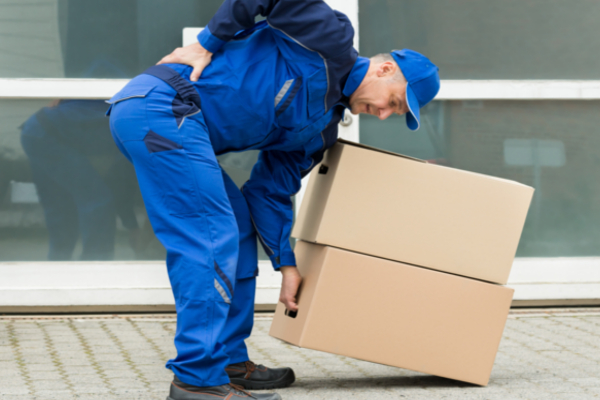
An estimated 80 percent of Americans will experience back pain at some point in their lifetime, with the lower back being a primary complaint. Beyond the inconvenience and discomfort, lower back pain can result in more doctor’s visits, missed work or school and decreased productivity.
Generally, lower back pain can range from a dull ache to a sudden, sharp pain. It may arise from an accident, a demanding workout, lifting something heavy or age. Typically, issues are either mechanical or involve an injury to the soft tissue, nerve roots, spinal joints or intervertebral discs.
If you’re experiencing back pain with little to no relief, here’s what you should know.
Why Lower Back Pain Occurs
Lower back pain primarily affects the lumbar region and its five vertebrae. This area supports your upper body weight to provide shock absorption through the intervertebral discs when you move. Also in this region are ligaments that support the vertebrae and tendons that secure the muscles to the spinal column. Nerves from the spinal cord pass through this area.
Considering this setup, even everyday activities can place a significant amount of strain on the lower back. As discs experience age-related wear and atrophy, conditions like degenerative disc disease or a herniated disc can result. More stress is placed on the nerves along the spinal column, causing a high degree of pain that may pass through the pelvic area and legs.
Several factors can influence the development of lower back pain, including:
- Loss of muscle flexibility and increased osteoporosis risk, particularly in adults over 30.
- Decreased or inconsistent fitness, often resulting in a weak core and abdominal muscles.
- Weight gain, which can place greater stress on this region of the spine.
- Conditions like ankylosing spondylitis, an inflammatory disease in which the vertebrae fuse over time, passed down from generation to generation.
- Jobs involving heavy lifting or significant upper body movement that can affect the spine.
- Sitting all day, with a lack of ergonomics and physical activity contributing to poor posture.
- Smoking, which decreases the amount of blood flow to the discs in this region.
- Carrying a heavy backpack, an issue primarily affecting school-aged children.
What are the most common types of back pain?
Acute Back Pain
Acute back pain is short term, with the injury or sensation typically lasting a few weeks. The condition does not have a long-term impact on functionality and symptoms tend to resolve themselves.
Sprain and strain are common sources of acute lower back pain. Injuries may be gradual, as a result of repetitive motion, or emerge suddenly when a muscle is stretched too far, damaging the ligaments. These injuries may occur after you lift a heavy object, experience a fall or may be cumulative after years of sitting at a desk.
Chronic Back Pain
When back pain lasts for at least 12 months, it’s considered chronic. When treated incorrectly or an underlying cause is ignored, acute injuries have the potential to become chronic.
Sources of chronic back pain may include:
- A herniated disc – when a disc in the lumbar region is pushed through the disc wall – pressing on adjacent nerves and causing compression, inflammation and pain.
- Degenerative disc disease, which occurs when lumbar discs atrophy, dehydrate and break down, causing pain and weakening the joints.
- Joint issues, in which the facet joints along the lumbar region or the sacroiliac joint at the base of the spine experience pain and inflammation.
- Spinal stenosis, in which the spinal canal that nerves pass through narrows.
- Spondylolisthesis, in which vertebra slip over each other as a result of instability or a fracture.
- Osteoarthritis, stemming from wear and tear to the lumbar region’s joints and discs. This can result in inflammation, instability and eventually pain related to stenosis.
- A deformative condition like kyphosis or scoliosis causing the discs and joints to break down.
- Dislocations from trauma, resulting in pain after a fall or other accident.
- A compression or vertebral fracture, often as a result of osteoporosis.
- Another medical condition, like diabetes, kidney stones, endometriosis, fibromyalgia, tumors or a pinched nerve, causing a sharp pain in the lower back.
Tips to Lessen Lower Back Pain
Generally, those who sit all day long, work in a vibration-heavy occupation like construction or regularly twist their upper body are at higher risk for lower back pain. To decrease your chances:
- Work on improving your posture when sitting and standing
- Make sure you lift with your knees, rather than bending from your lower back
- Regularly engage in exercises that strengthen your back, core, hips and pelvic area
- Avoid laying down when your back starts bothering you; being sedentary can aggravate pain
- Don’t ignore discomfort – visit your doctor to identify the underlying issue
Your doctor may recommend physical therapy to work on your posture and develop an exercise routine to strengthen your lower back and core muscles.
To learn more about our services, contact Integrated Rehab today.

